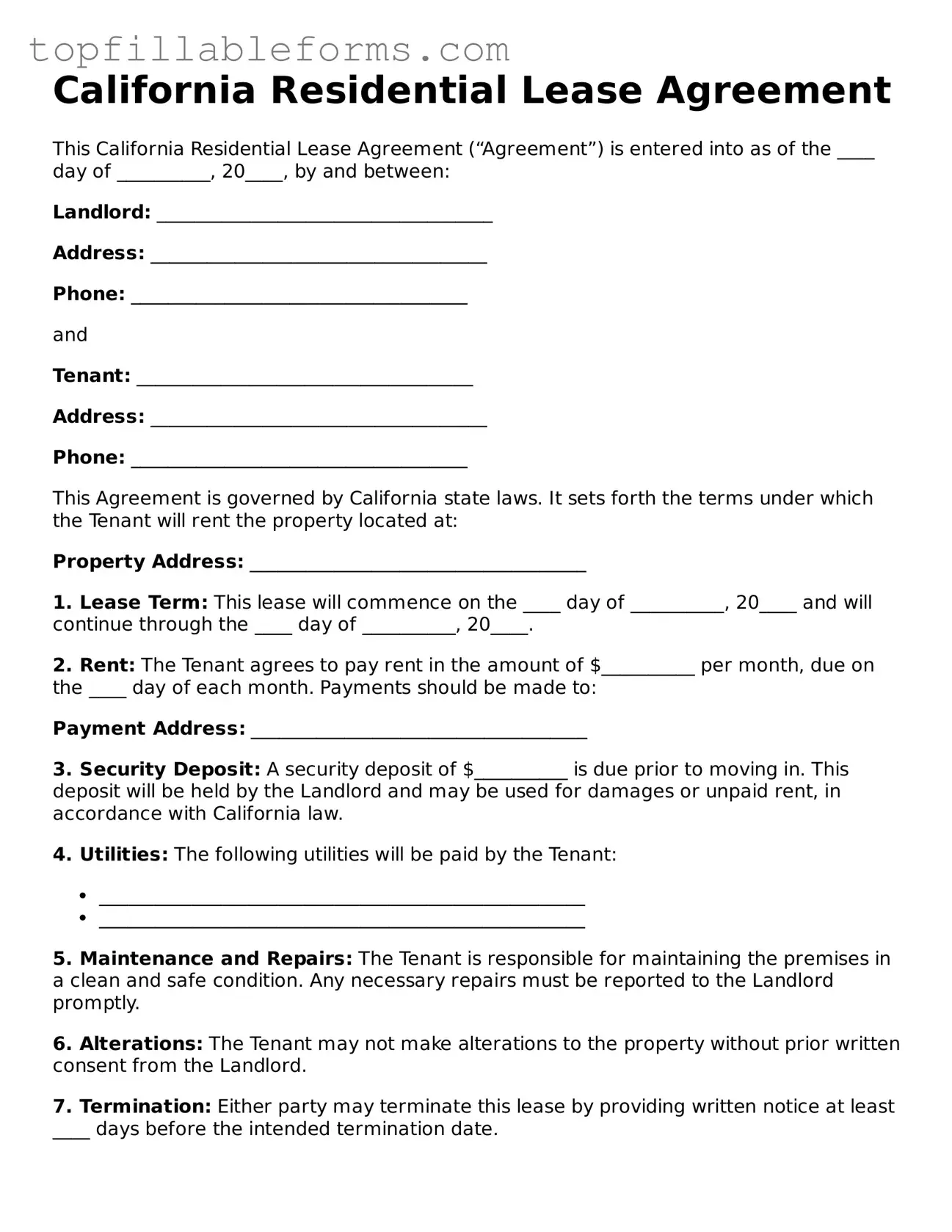California Residential Lease Agreement
This California Residential Lease Agreement (“Agreement”) is entered into as of the ____ day of __________, 20____, by and between:
Landlord: ____________________________________
Address: ____________________________________
Phone: ____________________________________
and
Tenant: ____________________________________
Address: ____________________________________
Phone: ____________________________________
This Agreement is governed by California state laws. It sets forth the terms under which the Tenant will rent the property located at:
Property Address: ____________________________________
1. Lease Term: This lease will commence on the ____ day of __________, 20____ and will continue through the ____ day of __________, 20____.
2. Rent: The Tenant agrees to pay rent in the amount of $__________ per month, due on the ____ day of each month. Payments should be made to:
Payment Address: ____________________________________
3. Security Deposit: A security deposit of $__________ is due prior to moving in. This deposit will be held by the Landlord and may be used for damages or unpaid rent, in accordance with California law.
4. Utilities: The following utilities will be paid by the Tenant:
- ____________________________________________________
- ____________________________________________________
5. Maintenance and Repairs: The Tenant is responsible for maintaining the premises in a clean and safe condition. Any necessary repairs must be reported to the Landlord promptly.
6. Alterations: The Tenant may not make alterations to the property without prior written consent from the Landlord.
7. Termination: Either party may terminate this lease by providing written notice at least ____ days before the intended termination date.
8. Additional Terms:
The following additional terms are included as part of this Agreement:
- ____________________________________________________
- ____________________________________________________
This Agreement constitutes the entire understanding between the parties regarding the subject matter herein and supersedes all prior agreements or representations.
By signing below, both parties agree to the terms of this Agreement.
Landlord's Signature: _______________________________ Date: __________
Tenant's Signature: _______________________________ Date: __________
